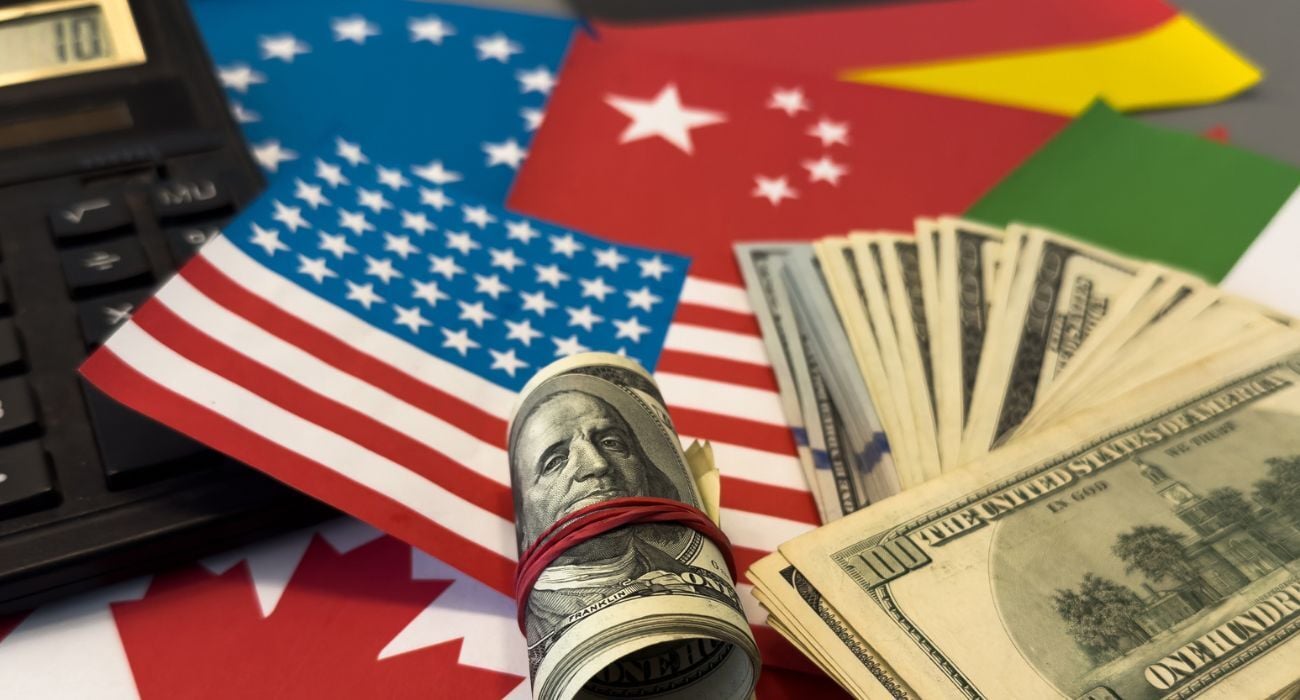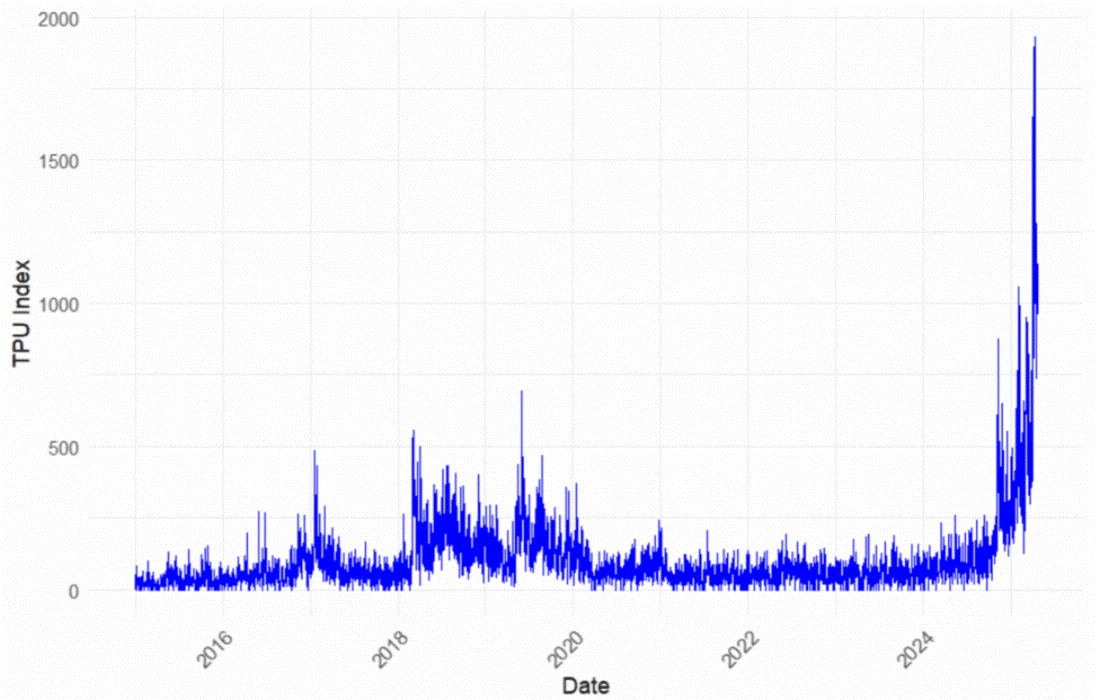
Barriers to trade have many repercussions in the real economy, including price hikes, rising inflation, interest rate volatility and supply-chain disruptions. But what impact will the trade wars, fueled by constantly evolving tariffs under the Trump administration, have on credit portfolio management?
Nobel prize winners (like Paul Krugman) and former IMF chief economists have spent weeks explaining the effects of trade wars, but, strangely, the credit risk component of all of the tariffs movement has received relatively little attention. That may be because accounting for tariffs is a complex issue that will require the use of new credit risk methodologies.
Let’s unpack this complex puzzle, step-by-step, and then focus on appropriate actions that credit risk managers can and should take.
First-Order Effects: Decreasing Affordability
A basic rule of international economics is that firms trade with each other – not with countries. So, any analysis of trade war repercussions must start at the firm level, where we can make a distinction between firms faced with higher costs of imports and those faced with tariffs for their own exports.
Marco Folpmers
The tariffs that are imposed on the imports from specific countries will lead to price increases at the importing firm. If the importer concludes that a product component is now more expensive, it will either pass on the price increase in its final product price or absorb the higher cost in its margin – or seek an alternative.
In its April 2025 Beige Book, the Federal Reserve states that many importers have “already received notices from suppliers that costs would be increasing” because of rising tariffs, and that importers therefore expect “elevated input cost growth.”
Whatever action (or combination of actions) a firm takes will ultimately impact its financial performance, altering its debt service coverage ratio. This change needs to be considered by banks that lend to importers. The probability of default (PD) for the loans issued to these firms may deteriorate, placing some clients on banks’ watchlist for increased levels of credit risk.
These trends may also have an impact on the loss given default (LGD) of bank loans issued to importers. Remember, once the economic conditions of a specific sector (like manufacturing with imported raw materials) decline, its fixed assets will be less marketable and can only be sold off if repurposed. This will lead to lower asset prices and higher LGDs.
The result is that the banks’ assessments of loans issued to importers will decline. Consequently, banks will have to increase the expected loss and the regulatory capital covering these particular loans. They may also try to pass on the added costs to their clients (importers), via reset interest rates.
What’s more, banks that report under IFRS 9 and that lend to importers may need to increase their IFRS 9 expected credit loss estimations. Since IFRS 9 provisioning is forward looking and anticipates losses on the future development of the debt service coverage ratio, this impact will be felt immediately.
Outlook for Exporters
Firms whose exports will be hindered by rising tariffs face similar challenges. To stay in business, exporters will likely have to decrease the final price of their products, which will impact their performance and their income, as well as their debt service coverage ratio.
The worst-case scenario for exporters is that they end up with products that cannot be sold, forcing them to hold a large unsold inventory. This could lead to structural challenges that call into question not just their long-term profitability but even their survival. Staffers working at these firms face a difficult, uncertain future – with reorganizations and, in some cases, dismissals, seemingly on the horizon.
In its beige book, the Federal Reserve states that “several districts” have reported that importers and exporters are “taking a wait-and-see approach to employment, pausing or slowing hiring until there is more clarity on economic conditions.”
Second- and Third-Order Effects
The political idea behind a trade war is that an economic policy favoring specific industries (such as the manufacturing sector in the U.S.) is effective at helping those industries. This is among the secondary effects we can expect to see from U.S. policy changes on tariffs.
Under a protectionist policy like the one that is currently set up in the U.S., new firms can arise – with significant potential for earnings – in protected sectors. These companies will have a distinct advantage over the industries that are being hardest hit by the retaliatory tariffs.
This process, of course, takes time. Firms need to be set up, a client base needs to be established and employees must be recruited and trained.
Banks are crucial agents in this scenario, because they will need to provide the funds for setting up these new businesses. Indeed, this is likely a key reason why the Trump administration is pushing hard for lower interest rates.
On the downside, the economic uncertainty created by changing tariffs has yielded postponements of investments – another second-order effect. Indeed, the Trade Policy Uncertainty Index (see Figure 1) has reached unprecedented levels over the past few weeks.
Figure 1: Trade Policy Uncertainty Index

Source: TPU Index, through April 24, 2025.
When we look at the big picture, we also see third-order impacts of U.S. policy changes – the response of policy makers to the first- and second-order effects. These are impossible to predict but may include both an escalation of the tariffs – after trading partners take retaliatory measures – and a softening of a policy – after international agreements on de-escalation are negotiated.
Central banks may also take measures to mitigate the impact of policy revisions. In the U.S., the Fed typically has a dual mandate: stable inflation and optimum employment. However, in the current environment of looming stagflation, this dual mandate may lead to conflicts. For example, while inflation calls for higher rates, declining economic activity could result in lower rates. So, it will be interesting to see how the Fed navigates the drama surrounding tariffs.
The Importance of Mesoeconomics
Credit risk managers who want to survive and even thrive in this new era of volatility and uncertainty must develop a new way of thinking. Specifically, developments by groups of firms – aka the “meso” level – must be tracked and analyzed.
Today, credit risk methodology tends to focus exclusively on two levels: the individual level – e.g., the PD at obligor level – and the macro level – e.g., the three macro scenarios (base, optimistic and pessimistic) for IFRS 9 provisioning.
Going forward, this approach will be too simplistic. The first- and second-order effects outlined above cannot properly be captured by rough macro indicators such as GDP, unemployment and house prices. These effects will impact specific groups of firms whose correlated risk profiles are not currently modeled at the obligor level.
Credit risk professionals, in short, need to be able to identify firms that are similarly affected by the tariffs. European banks should seek answers to the following questions: Which firms depend on exports to the U.S. for, say, more than 15% of their revenues? Do we have retail clients working for these firms? And are they at risk of becoming unemployed?
U.S. banks, on the other hand, should strive to understand which firms are expected to suffer the most from retaliatory tariffs and from the export restrictions of targeted raw materials.
The questions we’ve outlined, of course, are only a starting point. A full analysis of the impact of tariffs can be conducted only when banks are able to model performance and risk at the supply chain level. Until then, they will not be able to understand the dynamics fully, either at the firm level or the individual client level.
What’s more, if trade war conditions persist, the development of new analysis tools will become urgent. New IFRS 9 provisioning methodologies, for example, may need to be created, borrowing elements from economic capital models that typically include some analysis at the sector level.
Parting Thoughts
After 80 years of globalization, it is not an exaggeration to say that we’ve reached a turning point in worldwide trade, thanks largely to the reciprocal tariffs adopted by the Trump administration.
Financial risk managers are not economists and therefore do not necessarily need to have an opinion on economic policy matters. But it is their job to make sense of the broader economic environment and to make sure that new determinants of credit risk are being embedded in their analyses and models. Expanding these models to the mesoeconomics level is a great way to start.
Dr. Marco Folpmers (FRM) is a partner for Financial Risk Management at Deloitte the Netherlands.
Topics: Counterparty